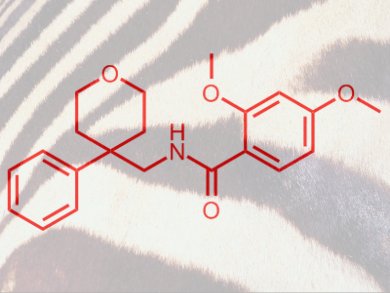Researchers at University of California, San Francisco, USA, have used chemical similarity to help them identify the biological targets for almost 600 compounds that showed activity in a zebrafish behavioral assay. Eleven compounds were fished out of the pool and had activities ranging from 1 nanomolar to 10 micromolar.
This proof of principle reveals how quickly targets can be predicted from chemotype and might be a general approach to finding new medically relevant receptors, enzymes and other proteins involved in diseases states by using only computational methods.
- Chemical informatics and target identification in a zebrafish phenotypic screen,
C. Laggner, D. Kokel, V. Setola, A. Tolia, H. Lin, J. J. Irwin, M. J. Keiser, C. Y. J. Cheung, D. L. Minor, B. L. Roth, R. T. Peterson, B. K. Shoichet,
Nature Chem. Biol. 2011.
DOI: 10.1038/nchembio.732




